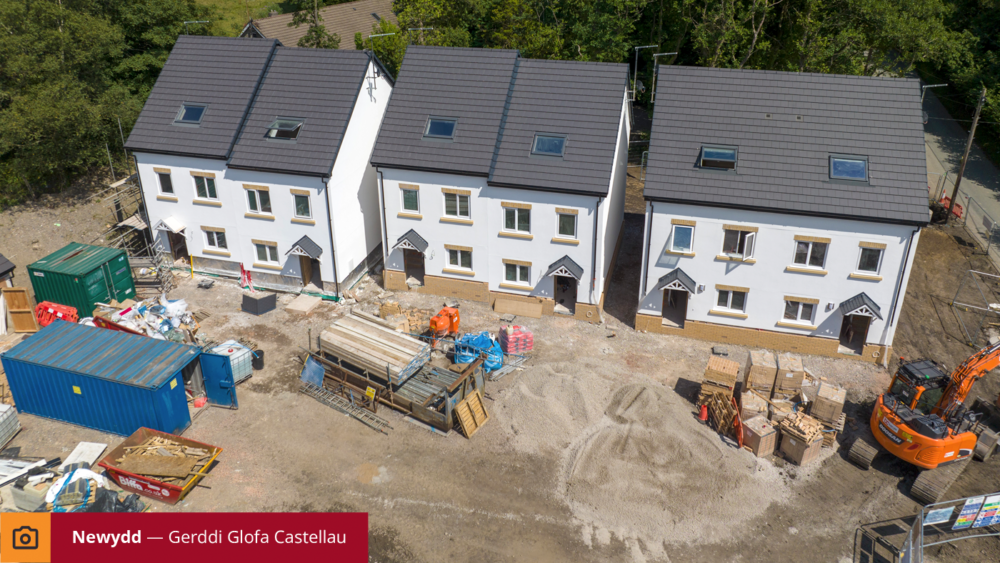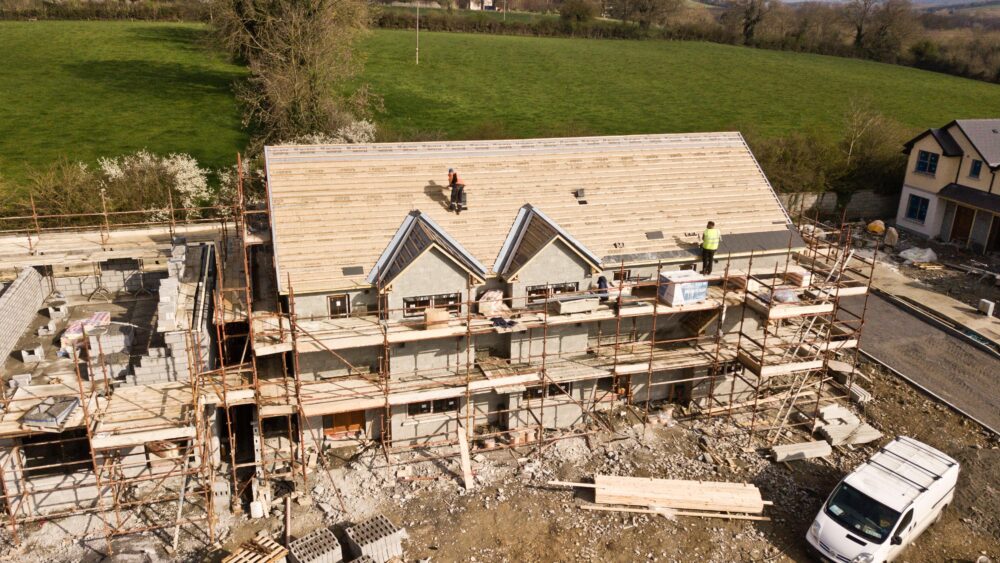Planning, skills and land: our members on the key issues affecting social housing supply in Wales

Supply of social homes has been high on the public agenda this past summer. The Senedd’s Local Government and Housing Committee has been holding an inquiry into the issue, while Audit Wales released its report on Welsh Government's spending and performance against the 20,000 social homes target.
For those working in the sector, however, the supply of homes is a near constant talking point - not least as Wales continues to seek a way out of the housing crisis.
Our view at Community Housing Cymru is that increasing the supply of decent homes that support people to live well is the ultimate way out of the housing crisis. That is why, despite the multiple challenges that all home builders across the UK continue to face, housing associations have remained focused on developing at pace and scale.
In fact, they have managed to deliver 70-80% of Wales’s new social homes since 2022. And they have been looking at how they can make best use of existing properties, converting or upgrading them to meet the needs of people in their communities.
We are continuing to feed our members’ experiences and insights into national work to improve the operating environment, which in turn will ensure social homes are built for people in Wales - but what do development leads on the ground think?
We spoke to Chris Kinsey from Monmouthshire Housing Association, and Adra’s Sion Hughes after they joined a roundtable event to share their views on social housing supply and development challenges in Wales. Here, we’ve pulled together some of their key talking points and takeaways.
Planning, skills and other pressures
For Chris Kinsey, head of development/assistant director of development at Capsel Ltd (a subsidiary of Monmouthshire Housing Association), there has not been a single, specific barrier to development that he has seen, rather the challenges are wide-ranging and multiple.
Skills and labour shortage
“We feel that the retrofit and decarbonisation agenda will increase the [existing] pressures on skills through new training requirements and redeployment of existing skills and trades,” Chris said.
“At Monmouthshire Housing Association (MHA) we have a high ratio of apprentices to trades staff, and a strong ‘grow your own’ programme, but this may not be replicated across the industry as a whole, and as a result we have a very large volume of applicants for each apprenticeship post.
“We also place priority on targeted recruitment and training opportunities through our procurement of high value works contracts. More support for getting young apprentices leaving school into employment would clearly be welcomed.”
Planning
“There is a significant shortage of planning case officers in Wales and this is leading to delays at an operational level,” Chris said. “We have supported local planning authorities through the use of planning performance agreements which have led to higher fees and growth in administrative support.
“Feedback from local authorities suggests that there continues to be a struggle to recruit and retain staff within this area. We believe that universities and colleges are not producing enough graduates to fill posts in this area so this problem is unlikely to diminish in the foreseeable future.
“We have started to provide support in trying to identify graduates through our own schemes, and signposting to local planning authorities, with some limited success to date, and would encourage more organisations to do the same.
“The pace of change has never been so great with so many competing interests. No recent Acts have served to rationalise the planning system we operate within. Conversely they have served to make it more complex and have reduced rather than increased the delivery of new homes.”
National pressures
“MHA is supportive of policies such as improved energy performance of homes, nature-based sustainable urban drainage systems, net gain biodiversity and reducing greenhouse gas emissions,” Chris said. “However, the convergence of progressive policies on prospective schemes has placed pressures on projects that can often take years between inception and a start on site date.“
Land supply and LDPs
For Sion Hughes, director of policy and delivery at Adra, the lack of public land is a pressing concern that must be addressed so delivery of homes can continue and progress.
“There is currently a lack of public land available for social housing development, which in turn drives up the cost of developing social homes,” Sion said.
“At Adra, we have worked with local authorities in Conwy (Plas Penrhyn) and Gwynedd (Hendre, Caernarfon) to purchase land for competitive prices to develop social and affordable homes - but we need a long-term strategy to be able to continue doing this more broadly across Wales.
“All public sector bodies in Wales are under pressure to maximise their income. So when public sector land becomes available, prices are extremely high due to open market competition.
“If we had a strategy in place however, public land - both brownfield and greenfield sites - could be identified and released for social housebuilding at competitive values,” Sion added. “Any publicly owned land in Wales which is potentially available for development should be considered under this strategy to deal with the current housing crisis.
For Adra, Welsh Government’s land division could play a part in identifying public and private sector land purchase opportunities at competitive prices for social housing developers. It also sees Unnos [the national construction company set up by Welsh Government to support councils and social landlords to improve the supply of social and affordable housing] playing a strategic role in helping increase the supply of land.
Alongside this, Sion thinks that the process of developing local development plans should be simplified and accelerated.
“Local development plan areas and boundaries should be continually reviewed with a view to releasing further suitable land for development,” Sion said. “This should be done in consultation with local communities. Social landlords should also be an integral part of developing these plans.”
“We have seen instances where developers own land which would be suitable for building that borders on existing developments - but it falls outside of local development plan boundaries.”





